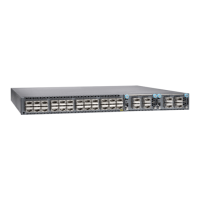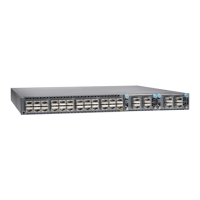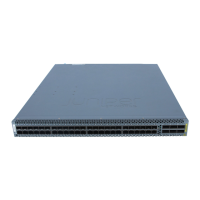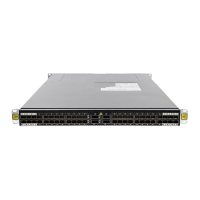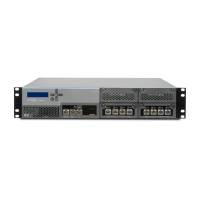3. If the port in which you want to install the transceiver is covered with a dust cover,
remove the dust cover and save it in case you need to cover the port later.
4. Using both hands, carefully place the transceiver in the empty port. The connectors
must face the device chassis.
CAUTION: Before you slide the transceiver into the port, ensure that the
transceiver is aligned correctly. Misalignment might cause the pins to
bend, making the transceiver unusable. Note that on QFX5100-48T
devices, the QSFP+ top and bottom ports have the same orientation for
inserting and removing transceivers. On all other QFX Series devices, the
ports are designed belly-to-belly, which requires youto turn the transceiver
over on the bottom port row. See Figure 45 on page 114 through
Figure 48 on page 115 for the correct orientation for your device.
5. Slide the transceiver in gently until it is fully seated. See Figure 45 on page 114 for an
example of inserting an SFP transceiver. Figure 46 on page 115, Figure 47 on page 115,
and Figure 48 on page 115 are examples of inserting QSFP+ transceivers into different
QFX Series product SKU devices.
6. Remove the rubber safety cap when you are ready to connect the cable to the
transceiver.
WARNING: Do not look directly into a fiber-optic transceiver or into the
ends of fiber-optic cables. Fiber-optic transceivers and fiber-optic cables
connected to transceivers emit laser light that can damage your eyes.
Figure 45: Installing an SFP Transceiver in the QFX Series
Copyright © 2017, Juniper Networks, Inc.114
QFX5110 Switch Hardware Guide
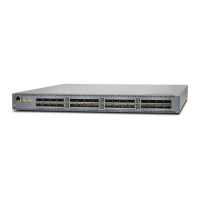
